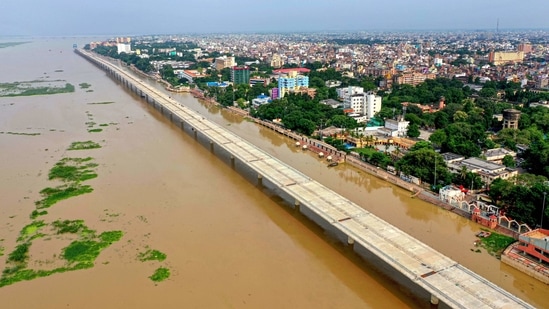Patna’s more than 80% buildings are not earthquake resilient, warn experts
People tend to flout norms required for earthquake resilient constructions despite experiencing tremors, said an expert
More than 80% buildings in Patna are not earthquake resilient, experts said, and warned that they may not withstand a major tremor in future, causing huge loss of human lives and infrastructure.

Bihar’s capital city is one of the most vulnerable to earthquakes as per the National Centre of Seismology (NCS), India Meteorological Department (IMD). Patna falls under Zone IV, classified as a severe zone by the NCS.
With the latest one reported on February 15, the city receives aftershocks most times an earthquake shakes up Indo- Nepal border areas. On August 21, 1988, when a 6.9 magnitude quake hit Nepal near the Indian border, the entire north Bihar including Patna shook for 15 seconds and the tremors left behind cracks in thousands of buildings including the old secretariat in the capital.
In 2015, an earthquake of 7.8 magnitude on Richter scale hit the capital in April, followed by another earthquake of 7.3 magnitude in May, though their epicentre was in Nepal. These quakes damaged many old structures in the city.
Bihar Building Byelaws 2014 have guidelines for making new construction earthquake resilient, the state government decided to identify the vulnerabilities of old buildings and improve their strength with retrofitting.
“But hardly a few state buildings have been covered under this programme,” Sunil Kumar Chaudhary, Bihar Engineering Service Association general secretary and former Bihar State Disaster Management Authority, official said.
The plan was to first address issues with heavily populated important buildings like government offices, hospitals and schools, he added.
“A large part of the state capital is yet to get this infrastructural makeover. Work in this direction has been moving at a snail’s pace,” he said. Even for new constructions people tend to ignore the guidelines. Buildings continue to come up in a haphazard manner, he added.
“People fail to realize that the state is a seismically active zone and while eight districts fall under Zone V, which is a very severe seismic zone, altogether 24 districts including Patna come under Zone IV- the severe zone. Though it’s hard to say when and where the next earthquake will hit, scientists say big quakes are inevitable,” he said.
The former BSDMA official said that since no major earthquake has been witnessed in the Himalayan area after the Nepal earthquake of 8.5 magnitude in 1934, when several districts including Munger, Sitamarhi, Madhubani and Darbhanga were decimated the next big earthquake in near future can’t be ruled out. “This long gap is the signal for another earthquake of similar magnitude in the coming years and if it happens, there will be huge loss of life and property,” he said.
Atul Aditya Pandey, head of the geology department, Patna University, said, “The most unfortunate part is people tend to flout norms required for earthquake resilient constructions despite experiencing tremors. Visit the interiors of the colonies like Kankarbagh, Postal Park, Chandmari Road, Saidpur, Lohanipur in the city and you will find buildings have been constructed without leaving the minimum space,” he said.
Also Read: One nation, one rate: Nitish Kumar pushes for uniform power rates for all states
BK Mishra, senior adviser (technical), Bihar State Disaster Management Authority, said the BSDMA has been working hard to improve things in the state. “It’s difficult to make all the existing buildings in the city earthquake resilient. Even then the BSDMA is providing technical support to various government departments to handle vulnerability assessment and retrofitting work. Four- day long training sessions for the engineers have been held in 36 districts of the state,” he said.
Mishra added that construction workers have also been imparted training. “They are the most important component of the entire effort to make earthquake-resilient buildings and have been explained the method during seven- day long training sessions,” he said. Out of 534 blocks in the state, training sessions have been held in 500 blocks,” he said.
Stay updated Bihar Lok Sabha Result and with all the Breaking News and Latest News from Bengaluru. Click here for comprehensive coverage of top cities including Delhi, Mumbai, Hyderabad, and more across India . Stay informed on the latest happenings in World News.
Stay updated Bihar Lok Sabha Result and with all the Breaking News and Latest News from Bengaluru. Click here for comprehensive coverage of top cities including Delhi, Mumbai, Hyderabad, and more across India . Stay informed on the latest happenings in World News.






